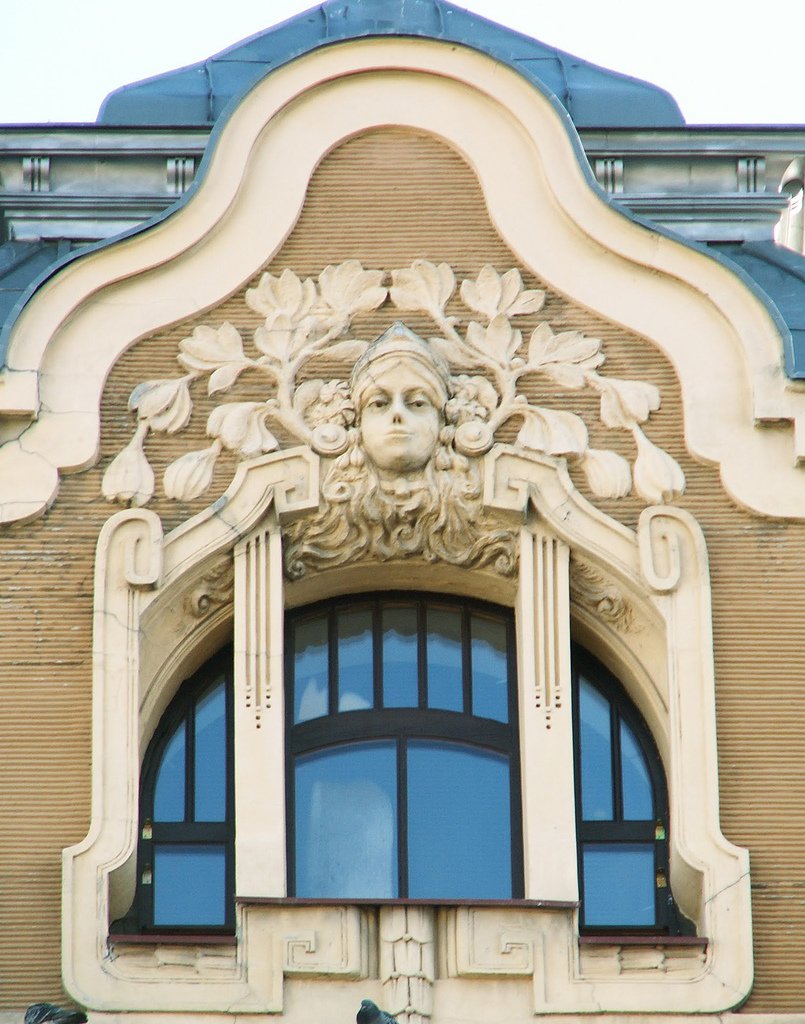#5032. Art Nouveau Female Mascaron: Elegant Fusion of Sculpture and Architecture
An exquisite example of Art Nouveau style — the building's facade is adorned with a characteristic decorative element above the window opening. The central window is framed by an elegant curvilinear cream-colored frame that contrasts with the textured surface of the wall. The upper part of the window is crowned with a sculptural female mascaron with long wavy hair, which is a typical motif in Art Nouveau architecture of the early 20th century.
Above the mascaron is a floral ornament featuring stylized magnolia or tulip flowers, characteristic of Art Nouveau's botanical motifs. The architectural composition demonstrates the fluidity of lines and asymmetry inherent to this style. The window frame itself has a graceful division, creating the effect of a semi-circular completion.
The facade is executed in pastel tones — beige and bluish-turquoise, which is also typical for Art Nouveau aesthetics. The wall texture imitates horizontal rustication, adding additional depth and relief to the facade. All this creates an organic yet sophisticated composition characteristic of European Art Nouveau from the late 19th to early 20th century.
